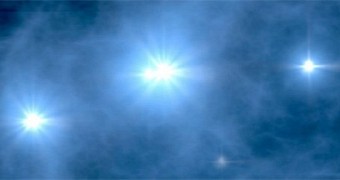A recent study in the journal Astronomy & Astrophysics announces the discovery of three previously undocumented stars that scientists say are about as old as the universe.
The fiery orbs were discovered by an international team of researchers, among them scientists at the Center for Astronomy of Heidelberg University in Germany.
They are estimated to be about 13 billion years old, which means that they formed when the cosmos, itself said to have emerged 13.8 billion years back, was still in its infancy.
The newly found stars are cosmic anomalies
Previous studies have shown that the first stars to form in the universe about 400 million years after the Big Bang were high-mass orbs producing insane amounts of light.
Specifically, it is said that the elements then present in the cosmos, chiefly hydrogen, helium and just a pinch of lithium, created orbs about 10 to 100 times bigger than our Sun and, consequently, way more luminous than our parent star.
The newly discovered trio of stars, however, are curiously small and not all that bright, astronomers say. Plainly put, they are cosmic anomalies. The odd ones out, if you will.
“The first stars have been assumed to be high-mass and to shine especially brightly,” Heidelberg University researchers and their colleagues wrote in a report detailing the discovery of these freakishly old celestial bodies.
“However, the latest observations point to hitherto unknown phenomena in the young universe, allowing for the emergence of much smaller stars,” the scientists add.
A possible explanation for the stars' petite figure
Evidence indicates that the recently identified orbs pack not just the more traditional ingredients for star formation but also a great deal of carbon. Hence, some say that they belong to an entirely new class of original stars.
Researcher Ralf Klessen explains that, in the early universe, carbon served as a coolant in that it lowered the temperature of cosmic gas, encouraging the formation of clouds and ultimately stars.
Since cooler gas forms smaller stars, it might be that the newly discovered celestial bodies owe their size to this chemical element. Then again, dust might have contributed to their birth as well, further cooling the gas that formed them.

 14 DAY TRIAL //
14 DAY TRIAL //